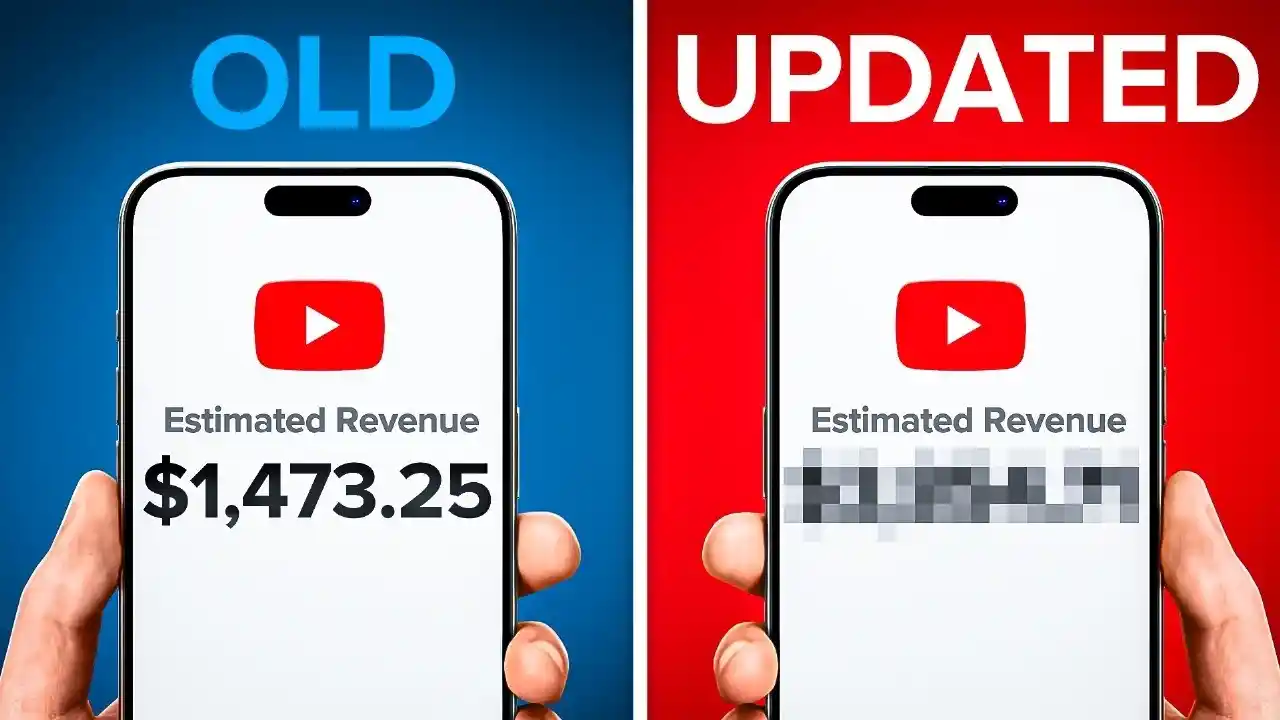By Rajib Das
YouTube, the world’s largest video-sharing platform, is a cornerstone for creators globally. For many, it’s not just a hobby; it’s a full-time career. Recognizing this, YouTube continuously refines its monetization policies to ensure fair compensation and a sustainable ecosystem for its creators. Recently, YouTube announced significant updates to its monetization policies, promising increased transparency and enhanced revenue opportunities for eligible channels. This article, written from a creator’s perspective, dives into these changes, exploring what they mean for you and offering practical insights to maximize your earning potential.
The Drive Behind the Updates: Why the Change?
YouTube’s monetization landscape is constantly evolving. These latest updates are driven by several factors:
* **Creator Feedback:** YouTube actively listens to its creator community. Many of these changes reflect direct responses to feedback regarding clarity, earning potential, and overall fairness.
* **Competitive Landscape:** The online video platform space is competitive. YouTube needs to attract and retain talent by offering competitive monetization options.
* **Evolving Advertising Standards:** As advertising technology evolves, YouTube needs to adapt its policies to align with industry best practices and ensure brand safety.
* **Combating Misinformation:** A robust and transparent monetization system also helps prevent bad actors from profiting from harmful content.
Decoding the Key Changes in Monetization Policies
So, what exactly has changed? Let’s break down the key updates:
1. Enhanced Transparency in Ad Performance
Previously, understanding exactly *why* certain videos were performing better or worse than others in terms of ad revenue could be a bit of a black box. The new policies emphasize providing creators with more granular data and insights into ad performance. This includes:
* **More Detailed Analytics:** Expect to see more specific breakdowns of ad revenue by ad type (e.g., skippable ads, non-skippable ads, overlay ads).
* **Audience Insights:** Better data on the demographics and viewing habits of your audience to help you tailor content and ad placement strategies.
* **Ad Suitability Scores:** Clearer explanations of why a video might be considered suitable for certain types of ads but not others. This helps creators understand the impact of content choices on monetization.
Practical Insight: Regularly review your analytics! Don’t just look at the total revenue; delve into the details. Identify which ad formats are performing best on which types of videos. This data can inform your future content strategy and ad placement decisions.
2. Streamlined Eligibility for the YouTube Partner Program (YPP)
The YouTube Partner Program (YPP) is the gateway to monetization. While the core eligibility requirements (1,000 subscribers and 4,000 valid watch hours in the past 12 months) remain, YouTube is streamlining the application and review process. This includes:
* **Faster Review Times:** YouTube is investing in resources to speed up the review process for new YPP applications.
* **Clearer Guidelines:** Updated and more accessible guidelines outlining exactly what types of content are eligible for monetization.
* **Improved Communication:** More frequent updates and communication throughout the application process.
Practical Insight: Make sure your channel meets *all* the eligibility criteria before applying. Pay close attention to YouTube’s Community Guidelines and AdSense policies. Ensure your content is original, compliant, and adds value to viewers.
3. Expanded Monetization Options Beyond Traditional Ads
YouTube recognizes that creators want to diversify their revenue streams. These updates include exploring and expanding alternative monetization options, such as:
* **Channel Memberships:** Allowing creators to offer exclusive perks and content to paying members.
* **Super Chat & Super Stickers:** Enabling fans to highlight their messages during live streams and Premieres.
* **Merchandise Shelf:** Allowing creators to sell official merchandise directly on their channel page.
* **YouTube Shopping:** Partnering with brands to allow creators to tag and promote products in their videos.
Practical Insight: Don’t rely solely on ad revenue. Explore these alternative monetization options! Channel memberships, for example, can provide a stable and predictable income stream. Consider what exclusive content or perks you can offer to your most dedicated fans.
4. Addressing “Demonetization” and Content Suitability Concerns
“Demonetization” – when a video loses its ability to earn ad revenue – is a major concern for creators. YouTube is taking steps to address this by:
* **Providing More Context:** Offering creators more detailed explanations when a video is demonetized.
* **Improving the Appeals Process:** Making it easier for creators to appeal demonetization decisions and providing faster responses.
* **AI-Powered Content Suitability Assessments:** Leveraging artificial intelligence to better assess content suitability for advertising, reducing the risk of incorrect demonetization.
Practical Insight: If your video is demonetized, don’t panic! Carefully review YouTube’s policies and guidelines. If you believe the decision was made in error, file an appeal. Document your content creation process and be prepared to explain why your video is suitable for advertising.
What These Changes Mean for You: A Creator’s Perspective
These updates are generally positive for YouTube creators. The increased transparency will empower you to make data-driven decisions about your content and monetization strategies. The streamlined YPP eligibility and expanded monetization options provide new avenues for earning revenue. The improved handling of demonetization concerns can reduce anxiety and frustration.
Actionable Steps for YouTube Creators
Here’s a summary of actionable steps you can take to benefit from these changes:
1. **Study the New Policies:** Thoroughly familiarize yourself with the updated YouTube monetization policies and guidelines.
2. **Dive into Your Analytics:** Regularly analyze your channel’s performance data to identify areas for improvement.
3. **Experiment with Ad Formats:** Test different ad formats to see which ones generate the most revenue for your content.
4. **Explore Alternative Monetization Options:** Consider implementing channel memberships, Super Chat, merchandise shelves, or YouTube Shopping.
5. **Create High-Quality, Engaging Content:** Ultimately, the best way to increase your revenue is to create content that viewers love and advertisers want to be associated with.
6. **Engage with Your Audience:** Build a strong community around your channel. Engaged viewers are more likely to support you through memberships, Super Chat, and merchandise purchases.
7. **Stay Updated:** Keep abreast of future changes to YouTube’s policies and best practices.
Conclusion: A Brighter Future for YouTube Creators?
YouTube’s updated monetization policies represent a significant step towards creating a more transparent and rewarding ecosystem for creators. While challenges undoubtedly remain, these changes offer a reason for optimism. By embracing these updates, leveraging the available data, and continuing to create compelling content, YouTube creators can position themselves for greater success and financial sustainability. As a fellow creator, I believe these policies empower us to build thriving channels and pursue our passion for creating videos. The future looks bright, and it’s up to us to seize the opportunities that lie ahead.
“`



